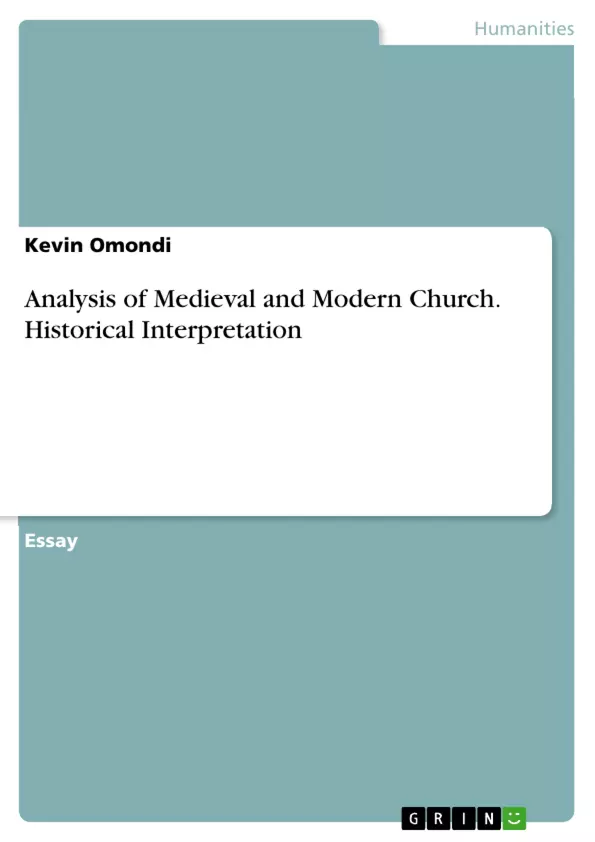What I have learned from Early and Medieval Church history can help the modern church towards its ideal in its space as a transcendent and human church and the place of the discipline of history in humanity is the assessment of its strengths, weaknesses, opportunities, and threats that it had to face in the course of the period in the environment of the early and medieval churches, and the current church is very different in terms of population, intellectuals, technology, and system. The response is divided into two parts: the first is an analysis of the medieval church, and the second is an assessment of the Anglican Church’s suitability and efficacy.
Inhaltsverzeichnis (Table of Contents)
- ANALYSIS OF MEDIEVAL AND MODERN CHURCH
- The Medieval Church
- Strengths
- Weaknesses
- Opportunities
- Threats
- The Anglican Church
- Strengths
- Weaknesses
- Opportunities
- Threats
Zielsetzung und Themenschwerpunkte (Objectives and Key Themes)
This analysis aims to examine the strengths, weaknesses, opportunities, and threats faced by both the medieval church and the modern Anglican Church. By comparing these two periods, the text seeks to provide insights into the development and challenges of Christianity throughout history.
- The strengths, weaknesses, opportunities, and threats of the medieval church.
- The strengths, weaknesses, opportunities, and threats of the Anglican Church.
- The influence of societal, political, and religious factors on the development of the church.
- The importance of education, social assistance, and cultural diversity in the church's work.
- The challenges of navigating internal and external threats to the church's beliefs and practices.
Zusammenfassung der Kapitel (Chapter Summaries)
- The Medieval Church: This chapter delves into the strengths of the medieval church, highlighting its power, wealth, moral authority, and monopoly on education. The chapter then explores the weaknesses of the church, such as superstition and ignorance, and the increasing divide between the devout and the less devout. The chapter concludes by examining opportunities for the church, including its role in social assistance, education, and community building, and its threats, which include external rejection of unorthodox beliefs and internal persecution.
- The Anglican Church: This chapter focuses on the strengths of the Anglican Church in Kenya, emphasizing its belief in a single God, the importance of the Bible, its commitment to prayer and worship, and its recognition of major creeds. The chapter then delves into the weaknesses of the church, such as challenges with leadership, management, and administrative structures, insufficient funds, and a lack of experience and confidence among leaders. The chapter concludes by exploring opportunities for the church, including funding possibilities, capacity building, and partnerships with other churches and faith groups, and its threats, which include rising inflation, higher taxes, and the increasing presence of divorced and LGBTQ+ individuals.
Schlüsselwörter (Keywords)
The analysis focuses on the medieval church, the Anglican Church, strengths, weaknesses, opportunities, threats, Christianity, education, social assistance, cultural diversity, internal and external threats, leadership, management, administration, funding, and societal factors.
- Citar trabajo
- Kevin Omondi (Autor), 2024, Analysis of Medieval and Modern Church. Historical Interpretation, Múnich, GRIN Verlag, https://www.grin.com/document/1470742



